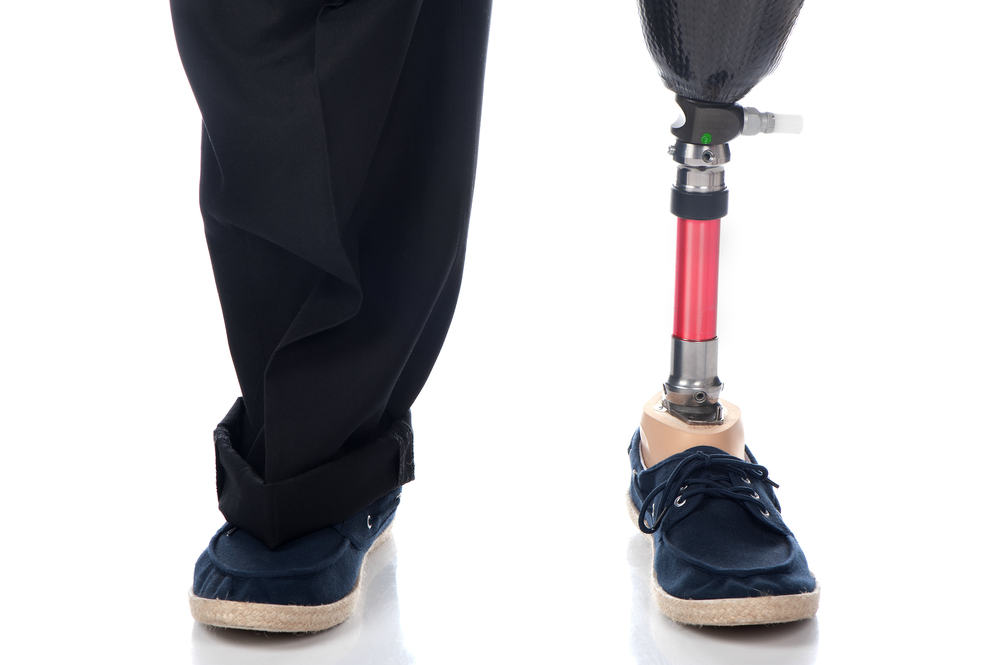Contents:
- Medical Video: Will Hospitals Give Back an Amputated Limb If You Ask For It?
- Various causes of amputation
- 1. Peripheral vascular disease
- 2. Trauma
- 3. Diabetic foot ulcers
- 4. Diabetic foot infection
- 5. Tumor
- 6. Cancer
- 7. Lack of congenital limbs
Medical Video: Will Hospitals Give Back an Amputated Limb If You Ask For It?
The causes of amputations vary, depending on the part of the body being amputated. Severe injuries or illness can sometimes damage body parts that cannot regenerate or recover. When the body's tissue dies, the infection will go inside and spread to other parts of the body. The main cause of tissue death that leads to infection is a lack of blood flow. Blood carries important nutrients and oxygen to the individual cells that make up your body's tissues. When a disease or injury damages a blood vessel beyond repair, tissue supplied by a blood vessel will die, and a dangerous infection can enter. When there is no hope that damaged or infected tissue can be restored in a healthy state, amputations are carried out to protect the rest of the body from spreading infection.
Various causes of amputation
1. Peripheral vascular disease
This is an amputating disease that affects the peripheral vascular system, and most arteries. Diabetes and a combination of high blood pressure and high cholesterol causes damage to the arterial lining. Large arteries become narrower or completely blocked. This will reduce blood pressure and the amount of blood circulation extreme. The walls of the arteries will shrink and the capillaries will thicken, so oxygen cannot cross the wall easily. If blood flow decreases, gangrene can occur. Gangrene is black dead tissue and some are dry and also wet. Wet gangrene is an infected gangrene and requires immediate emergency treatment.
2. Trauma
Amputation of the limbs can occur at the site of an accident, such as having a severe open fracture or severe neurovascular injury. Examples of traumatic wounds include, fractures, ruptured blood vessels, burns, blast wounds, and puncture wounds or gunshot wounds. In cases of traumatic amputation injuries, either as a life-saving procedure or when a limb is injured so badly that recovery is more effective with amputation. Cases of limb amputation trauma can occur for months or years due to failure of the healing process.
3. Diabetic foot ulcers
Diabetes is known to cause several problems, including heart attacks, strokes, kidney failure, blindness, and nerve dysfunction. This nerve dysfunction can sometimes be very painful, but often can be numb. Numbness is very dangerous, because pain is needed to protect the body from injury. When your feet are numb, you can cause damage by walking in an inflamed area, raising calluses unwittingly, or stepping on an object that can cause direct injury. The injured area becomes inflamed and can turn into deep blisters, such as being exposed to muscles, bones, or tendons, which can eventually cause interference with wound healing. Deeper ulcers will be increasingly difficult to cure.
4. Diabetic foot infection
Someone who is affected by diabetes tends to get an infection because diabetes suppresses the immune system. When there is an open wound, bacteria can enter the lower tissue of the skin, so that the infection can spread quickly. Foot infections can be classified as life-threatening or non-life-threatening. Life-threatening limb infections require hospitalization, IV antibiotics, and surgery. Non-life-threatening infections can usually be treated with oral antibiotics. Many infections can spread to the bones, so you can get osteomyelitis. Osteomyelitis is not easily diagnosed. In most cases, parts of the infected body must be amputated. Nearly 1 in 5 infections require amputation.
5. Tumor
Bone tumors and osteosarcoma and chondrosarcoma forming cartilage are rare malignant neoplasms that can be the cause of amputation. These tumors are aggressive and need local and systemic treatment. Surgery for removal of the tumor is mostly done by rescuing limbs.
6. Cancer
Cancer can cause severe damage to body tissues. Cancer also requires amputation for different reasons, namely to keep malignant tumors from spreading to other parts of the body.
7. Lack of congenital limbs
A child can be born in the absence of complete or partial limbs. To facilitate scientific communication (International Organization for Standardization (ISO) develops an accurate classification system. Classification is built on the basis of anatomy due to failure of formation. In the uterus, blood flow to limbs can be limited due to other tissues. As a result, limbs can be permanently lost, and babies are born with what is referred to as congenital amputations.
READ ALSO:
- Understanding Mineral and Bone Disorders in Chronic Kidney Disease
- Get to know the four types of rare bone diseases
- Does Diabetes Increase the Risk of Hepatitis C Virus Infection?












